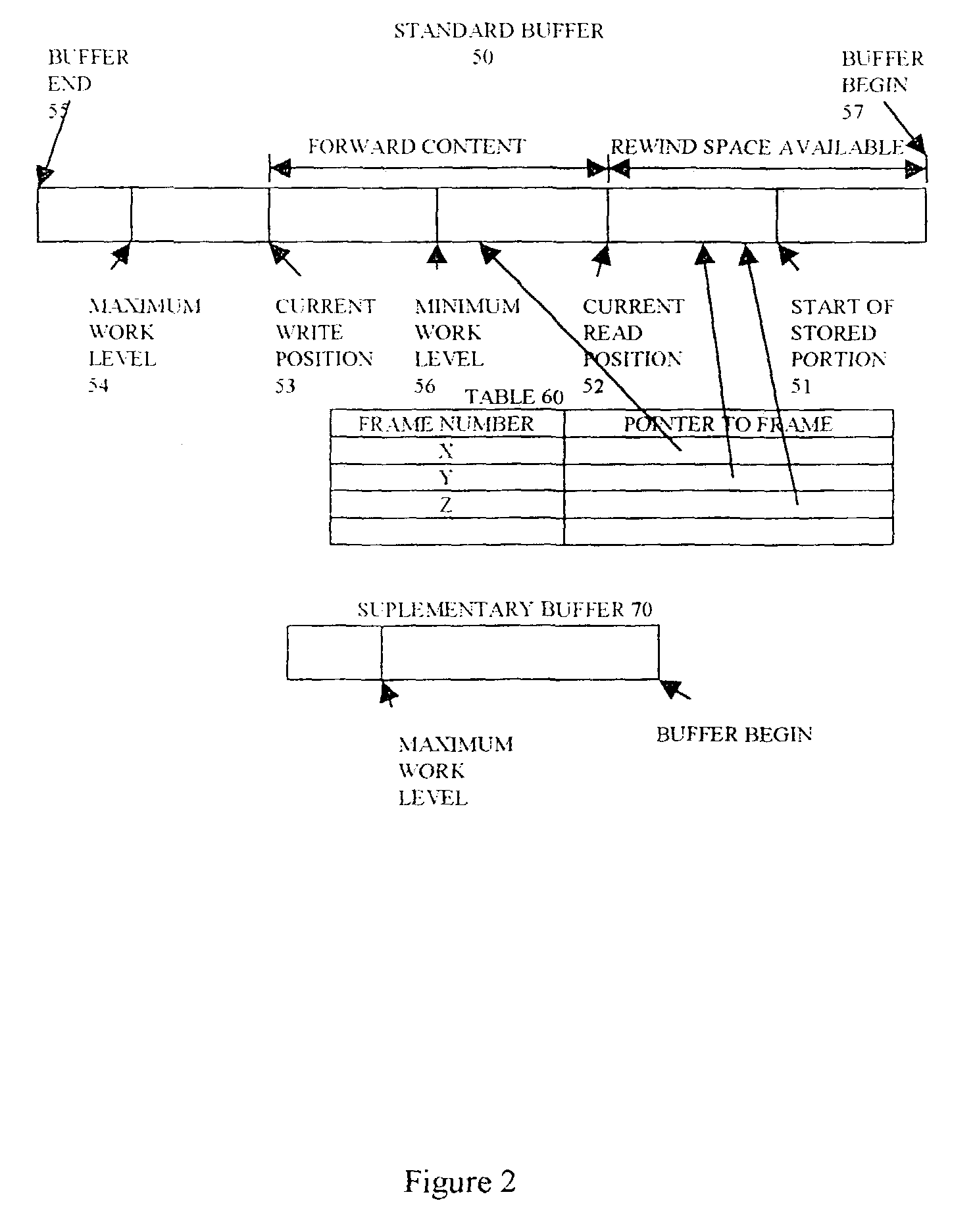Distributed cooperative memory for interactive and scalable video-on-demand system
a cooperative memory and video-on-demand technology, applied in the field of video-on-demand systems, can solve the problems of increasing the cost of production, and increasing the difficulty of production, so as to reduce the demand on the server and its link, the effect of extending the buffer chain and reducing the cost of production
- Summary
- Abstract
- Description
- Claims
- Application Information
AI Technical Summary
Benefits of technology
Problems solved by technology
Method used
Image
Examples
Embodiment Construction
[0026]A VoD system is composed of a VoD server 10 with stored movies and many clients 3040 interconnected by a data communication network 20.
[0027]The server consists of one or more processors, and it is responsible for sending the video flows correctly, to receive and process requests for new connections and VCR operations, to support these requests in the best possible way, to tariff the use of the service and, in this invention, to manage the Distributed Cooperative Memory (DCM), which comprises all the client reception buffers (standard and supplementary) that are in the system. Obviously these functions can be distributed among several computers that will execute the required tasks in an efficient way.
[0028]The client station is qualified to receive video flows and to display them to the user. Besides, clients communicate with the server to request interactive services like VCR operations. As the network can present variations in the video delivery rate as shown in the illustra...
PUM
 Login to View More
Login to View More Abstract
Description
Claims
Application Information
 Login to View More
Login to View More - R&D
- Intellectual Property
- Life Sciences
- Materials
- Tech Scout
- Unparalleled Data Quality
- Higher Quality Content
- 60% Fewer Hallucinations
Browse by: Latest US Patents, China's latest patents, Technical Efficacy Thesaurus, Application Domain, Technology Topic, Popular Technical Reports.
© 2025 PatSnap. All rights reserved.Legal|Privacy policy|Modern Slavery Act Transparency Statement|Sitemap|About US| Contact US: help@patsnap.com



